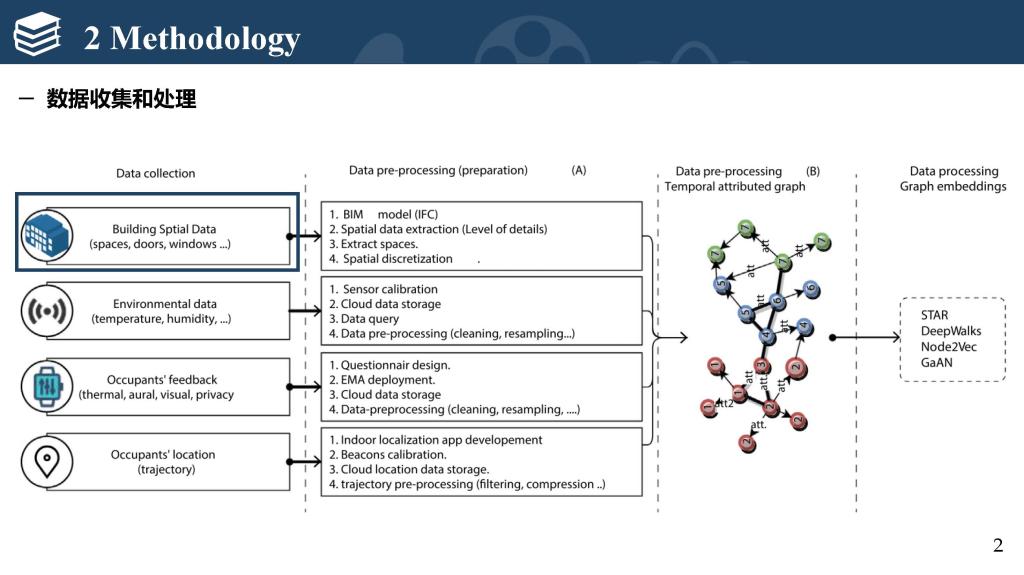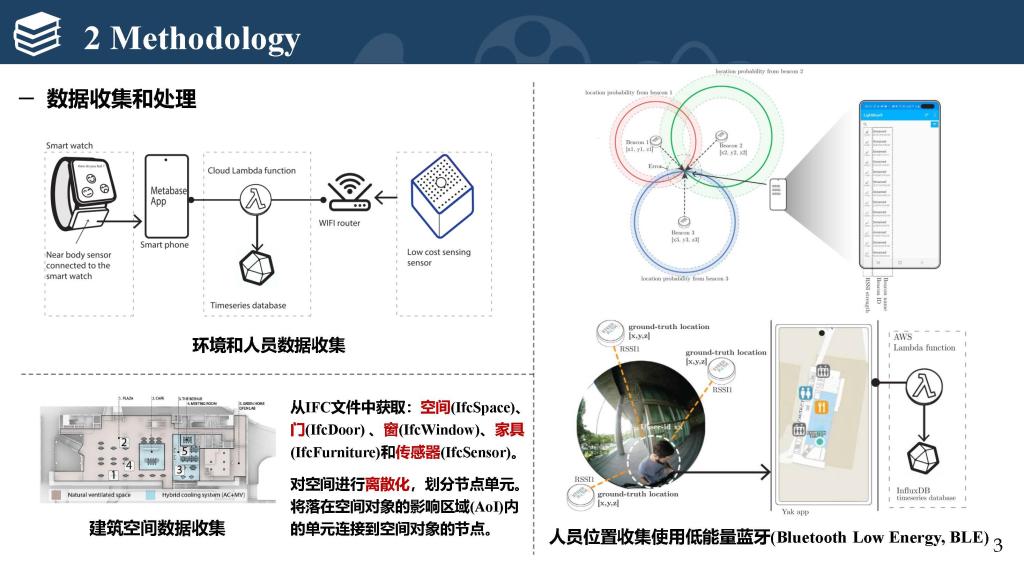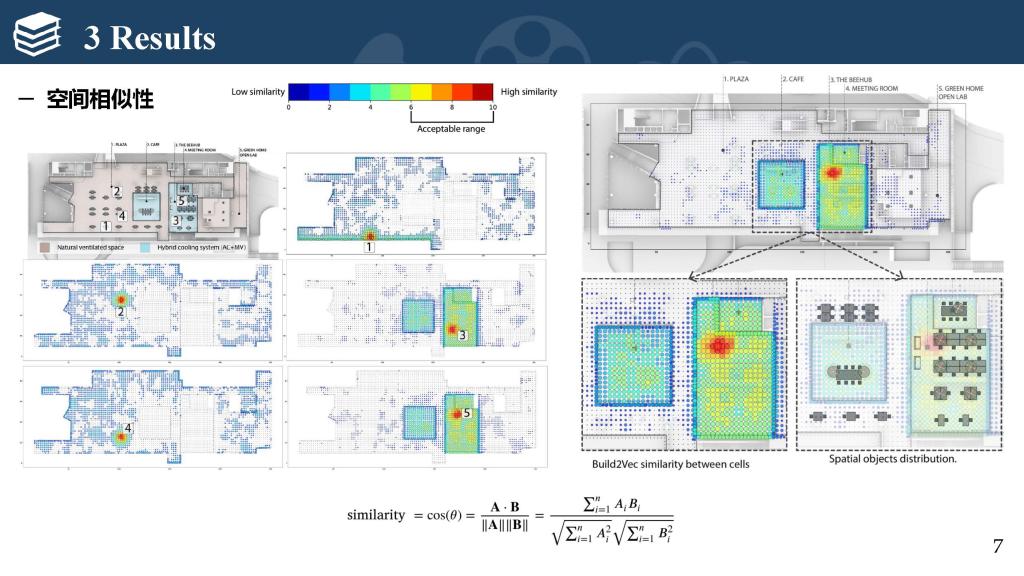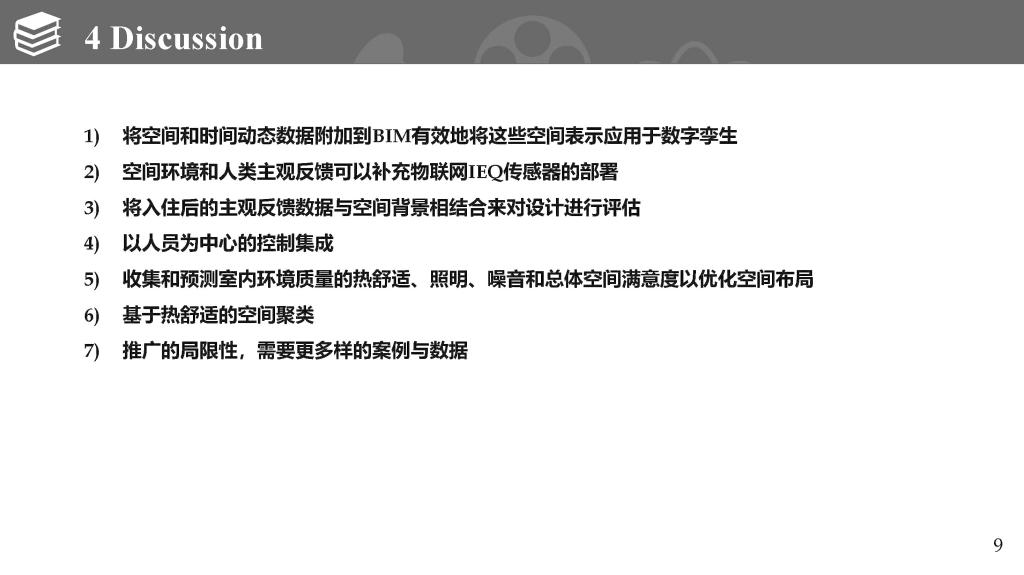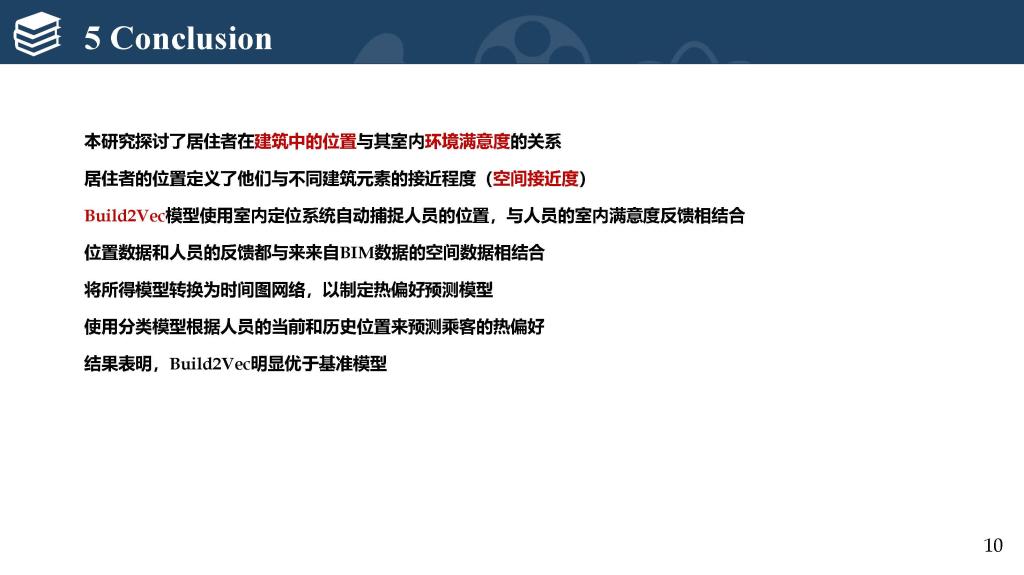文献来源:
Abdelrahman, Mahmoud M. (AUTHOR);Chong, Adrian (AUTHOR);Miller, Clayton (AUTHOR).Personal thermal comfort models using digital twins: Preference prediction with BIM-extracted spatial–temporal proximity data from Build2Vec.[J].Building & Environment,2022,Vol.207
文章摘要:
Conventional thermal preference prediction in buildings has limitations due to the difficulty in capturing all environmental and personal factors. New model features can improve the ability of a machine learning model to classify a person's thermal preference. The spatial context of a building can provide information to models about the windows, walls, heating and cooling sources, air diffusers, and other factors that create micro-environments that influence thermal comfort. Due to spatial heterogeneity, it is impractical to position sensors at a high enough resolution to capture all conditions. This research aims to build upon an existing vector-based spatial model, called Build2Vec, for predicting spatial–temporal occupants' indoor environmental preferences. Build2Vec utilizes the spatial data from the Building Information Model (BIM) and indoor localization in a real-world setting. This framework uses longitudinal intensive thermal comfort subjective feedback from smart watch-based ecological momentary assessments (EMA). The aggregation of these data is combined into a graph network structure (i.e., objects and relations) and used as input for a classification model to predict occupant thermal preference. The results of a test implementation show 14%–28% accuracy improvement over a set of baselines that use conventional thermal preference prediction input variables. • Occupants' location in a building can impact their thermal comfort preferences. • Spatial proximity of occupants with BIM model objects can enhance prediction accuracy. • Similar zones of preference can be extracted using a graph network structure. • Personal thermal comfort models using spatial data can outperform baselines by 14%–28%.
分享内容:


